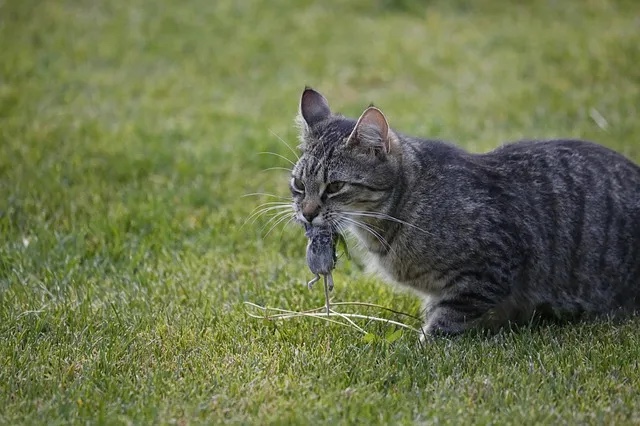Cats often bring home little presents for the humans that care for them. A mouse, a bird, a spider, a parasite. The Examiner spoke with Dr. Bill Sullivan of the Indiana University School of Medicine about Toxoplasma gondii, the cat parasite, and the illnesses it may bring.
Toxoplasma gondii is a single celled protozoan, related to the malaria parasite, Dr. Sullivan stated. Not all single celled animals are bacteria, which means, he explained, that most of the normal treatments for a bacterial infection such as antibiotics are ineffective on infections by protozoans. T. gondii and others have a different cell structure and life cycle than bacteria.
The parasite causes an illness called toxoplasmosis, and Sullivan stated that most people will experience no symptoms from their original infection. Because the parasite remains dormant in patients after their initial infection, it can reoccur at any time in the future, he stated, when the body’s immune system becomes weakened. Toxoplasmosis is considered by the Centers for Disease Control and Prevention (CDC) as an AIDS-defining conditions.
The parasite will go dormant after the initial infection, forming cysts which provide protection for the dormant parasite, he told the Examiner. Cats, from house cats to the big cats, are the only species known to produce oocysts, which are excreted in feces and become infectious after a few hours exposure to the environment. In other species, the cysts form in muscle or brain tissue. In humans, he stated, the latent cysts are found primarily in the brain and also in heart muscle.
Dr. Sullivan pointed to pregnant women as a class of patients at special risk from the parasite. A toxoplasmosis infection while pregnant places the unborn child at risk of complications in the future which may include “blindness or mental disability”, according to the CDC, and those complications can, in some cases, be present in newborns.
Pregnant women should follow the recommendations of the CDC, Sullivan urged, when it comes to caring for cats, cat litter boxes and even gardening. The Toxoplasma gondii oocysts found in cat feces cause the disease. They can be ingested or inhaled and can remain viable in the environment for one to two years. These cysts are found everywhere that cats are, and have infected species as diverse as kangaroos and beluga whales, he reported.
Toxoplasmosis can also be caught from undercooked or uncoooked meats or shellfish. Nearly any warm blooded animal can be infected by T. gondii and carry latent tissue cysts. Cooking to the temperatures suggested by the CDC or freezing the meat as recommended will kill the cysts and prevent infection. Sullivan pointed to lamb as a major source of these infections, along with pork.
There is medication to treat an infection with T. gondii when it is in its active stage. The medication will reduce to symptoms of the infection but it will not prevent the formation of cysts or do anything about existing cysts. Dr. Sullivan talked about three steps for preventing the disease. Because the parasite can go dormant, it remains a risk. The CDC notes that AIDS patients may require continuous treatment for the T. gondii parasite for the rest of their lives.
Education – the public health community is providing information to those at risk from T. gondii infections on how to prevent them, and how to recognize an infection.
The research community is trying to develop new drugs to treat the infection. More importantly, Dr. Sullivan stressed, is the development of drugs to attack latent tissue cysts.
The research community is also working to understand the parasite well enough to develop an effective vaccine for humans, and Sullivan noted, for cats.
This is not an illness that can be transmitted from person to person, Dr. Sullivan stated. Only felines, including house cats, can produce the oocysts that transmit the parasite. Other species, including humans, acquire the parasite through ingesting or inhaling the cysts.
William Sullivan, Ph.D. is Professor and Showalter Scholar, Pharmacology & Toxicology, Microbiology & Immunology, at the Indiana University School of Medicine in Indianapolis.








